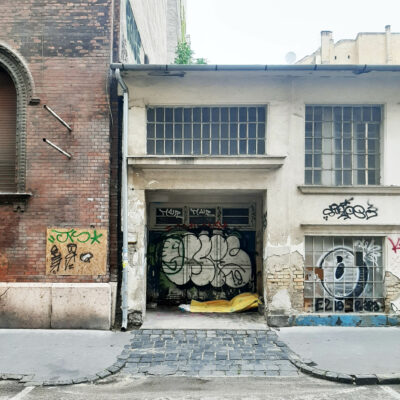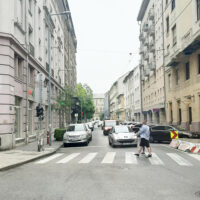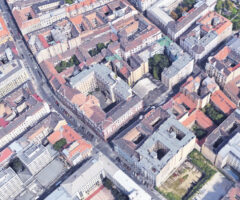SPECIALIZATION DESIGN COURSE / CARE FOR THE EXISTING / BUDAPEST

ABOVE: CARE FOR THE EXISTING – experimental techniques to appropriate hidden opportunities of the given urban fabric
SPECIALIZATION DESIGN COURSE (BMEEPUIA711) / (DEPARTMENT DESIGN 3 / DEPARTMENT DESIGN ME UI)
teachers: BENKŐ Melinda habil PhD, HORY Gergely PhD
person in charge: BENKŐ Melinda habil PhD
6 (8) credits
grading: semester mark
The term above refers to the design principles practiced in this studio: during the course, we develop design proposals that prioritize reuse of, and building “upon” or “on the top of” the existing instead of demolition. We believe that such an approach can be only successful if it is grounded on thorough research of the physical, social, economic and political layers of the actual location. Understanding the relations among these various issues leads us towards a more sensitive understanding of our built environment and its problems. Through the design process, students are to acquire consciousness that their proposed interventions are to be embedded into this complex system affecting all of its various layers.
This course aims to find ways to improve the quality of human life in densely populated residential areas by activating untapped opportunities in the existing physical infrastructure. We will make research and develop design proposals about the possible utilization of the currently unused in- and outdoor areas and look for interventions that add significant use value with simple means.

The scene under investigation is the historic city centre of the ninth district of Budapest, that in spite of being a hotspot of residential, touristic and labour related activities, still struggles with several huge abandoned buildings and public areas. This controversy triggers motivation to develop proposals that utilize the hidden opportunities of the area in a socially and environmentally sensitive approach, which prove that interventions being small regarding the use of infrastructure and financial resources, have the capacity to induce significant added value to the liveability of the city. In addition to improve qualitative factors of urban life, such interventions should also positively impact economic, social and political issues. The applied method is aimed at developing a design approach, where the different layers of urban reality are not competing factors, but act as elements working in a sensitive symbiotic balance sustaining each other.
In the first weeks of the semester, we are going to learn about the spatial, social, and political issues of our site of investigation to develop a deeper understanding of the urban context. Then we focus specifically on blocks facing Kinizsi street in the centre of the ninth district constituted by an exciting mixture of residential, administrative, industrial and public buildings from various eras of the past two centuries. After localizing most relevant issues to address, students develop design concepts for the wider neighbourhood. Afterwards they choose a part of their proposal that is to be further developed in detail (1:200 scale).
DEPARTMENT DESIGN 3 – for regular students // Moodle PASS
DEPARTMENT DESIGN ME UI – for Msc students // Moodle PASS

